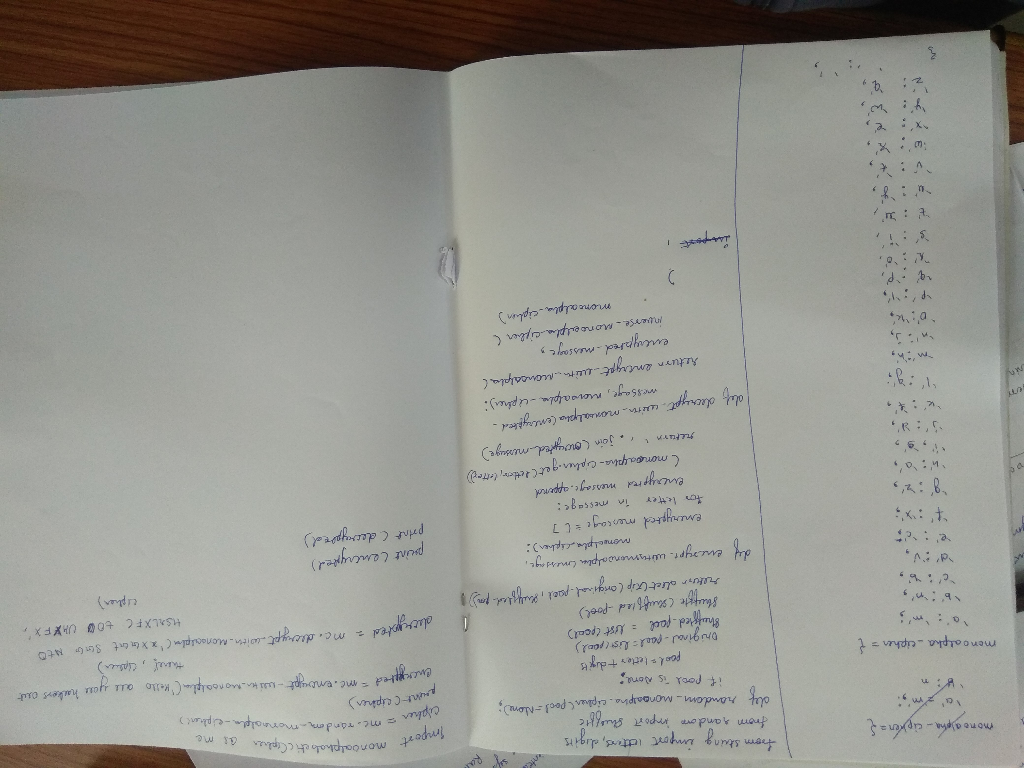

If you now multiply x and a and reduce the result (mod 26), you will get the answer 1. = gcd(a,m) % we can ignore g and d, we dont need them The easiest way to solve this equation is to search each of the numbers 1 to 25, and see which one satisfies the equation. If we find the number x such that the equation is true, then x is the inverse of a, and we call it a^-1.

Implement Monoalphabetic Cipher Encryption And Decryption In Python mod#
The decryption function is D ( x ) = a^-1 ( x - b ) mod mĪ^-1 : modular multiplicative inverse of a modulo m. Once again, the first step is to convert each of the ciphertext letters into their integer values. In deciphering the ciphertext, we must perform the opposite (or inverse) functions on the ciphertext to retrieve the plaintext. The encryption function for a single letter isĪ must be chosen such that a and m are coprime. It uses modular arithmetic to transform the integer that each plaintext letter corresponds to into another integer that correspond to a ciphertext letter. a should have no factors in common with m). a should be chosen to be relatively prime to m (i.e. The following discussion assumes the use of a 26 character alphabet (m = 26). The ‘key’ for the Affine cipher consists of 2 numbers, we’ll call them a and b. In the affine cipher, the letters of an alphabet of size m are first mapped to the integers in the range 0 … m-1. The whole process relies on working modulo m (the length of the alphabet used). The formula used means that each letter encrypts to one other letter, and back again, meaning the cipher is essentially a standard substitution cipher with a rule governing which letter goes to which. The Affine cipher is a type of monoalphabetic substitution cipher, wherein each letter in an alphabet is mapped to its numeric equivalent, encrypted using a simple mathematical function, and converted back to a letter. Program to print all substrings of a given string.stringstream in C++ and its applications.Reverse string in Python (5 different ways).Longest Palindromic Subsequence | DP-12.Given a string, find its first non-repeating character.C Program to Check if a Given String is Palindrome.Length of the longest substring without repeating characters.Check whether two strings are anagram of each other.Array of Strings in C++ (5 Different Ways to Create).Python program to check if a string is palindrome or not.Different methods to reverse a string in C/C++.Check for Balanced Brackets in an expression (well-formedness) using Stack.import random alpha 'abcdefghijklmnopqrstuvwxyz' def encrypt (original, keyNone): if key is None: l list (alpha) random.shuffle (l) key. I'd like to know if what I have is the most efficient, the most well written, and the simplest form of these functions. Write a program to print all permutations of a given string What we have here is your simple encryption and decryption (with a given key) tool.Write a program to reverse an array or string.ISRO CS Syllabus for Scientist/Engineer Exam.ISRO CS Original Papers and Official Keys.GATE CS Original Papers and Official Keys.


 0 kommentar(er)
0 kommentar(er)
